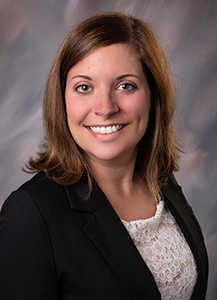Simple Safety: Fireworks
- Posted On:
- Written By: Dr. Deanna Lassegard

According to a July 2018 Insurance Journal article: At least eight people lost their lives in fireworks mishaps in 2017 while another 12,900 ended up in hospital emergency rooms with injuries.
The U.S. Consumer Product Safety Commission (CPSC) reports that on average 180 people a day visit Emergency Departments in the nation with fireworks-related injuries in the days leading up to the Independence Day celebration. Check out the most common injured body parts here.
Today I’d like to talk about firework safety.
First: It’s important that you know you should closely supervise children around fireworks at all times. If your child is injured by fireworks, immediately go to your doctor, urgent care or emergency department.
As we have reported earlier, fireworks can result in severe burns, blindness, scars, and even death, according to the American Academy of Pediatrics (AAP). Fireworks that are often thought to be safe, such as sparklers, burn at temperatures of about 2,000 degrees (hot enough to melt some metals) and can burn users and bystanders in an instant—even while being closely watched.
Fireworks can also be a leading cause of house fires and are attributed to many prairie fires each year.
Bottle rockets are out-of-control from the moment they are lit, taking erratic and unpredictable paths, and account for half of firework-related eye injuries. They account for an even greater proportion of those resulting in permanent blindness. A 1995 study of data from the United States Eye Injury Registry, which includes only very serious eye trauma, showed that bottle rockets caused almost 60% of firework-related eye injuries, and about 70 % of firework eye injuries to bystanders!
Be sure out check out Fireworks: The Blinding Truth put together by the American Academy of Ophthalmology, and review their safety tips here.
The AAP recommends that families should consider attending community fireworks displays run by professionals rather than using fireworks at home. On July 4 in Campbell County, Wyoming, the Fireworks Display begins at 10 pm, and is held at CAM-PLEX.
However, if you must shoot fireworks off personally, check out these tips provided by the CPSC:
- Never allow young children to play with or ignite fireworks without adult supervision.
- Never place any part of your body directly over a fireworks device when lighting the fuse.
- Never point or throw fireworks at another person.
- Never try to re-light or pick up fireworks that have not ignited fully.
- Light fireworks one at a time, then move back quickly.
- Keep a fire extinguisher, bucket of water or a hose handy when shooting off fireworks.
- Never carry fireworks in a pocket or shoot them off in metal or glass containers.
- After fireworks complete their burning, douse the spent device with plenty of water from a bucket or hose before discarding to prevent fire.
- Avoid buying fireworks that are packaged in brown paper because this is often a sign that the fireworks were made for professional displays and that they could pose a danger to consumers.
My recommendation is to enjoy professional fireworks displays and skip personal fireworks and the risks associated.
 Deanna L. Lassegard, MD, is an Emergency Physician at Campbell County Memorial Hospital in Gillette, Wyoming. Our resident safety expert, Dr. Lassegard writes monthly Simple Safety blogs for Campbell County Health.
Deanna L. Lassegard, MD, is an Emergency Physician at Campbell County Memorial Hospital in Gillette, Wyoming. Our resident safety expert, Dr. Lassegard writes monthly Simple Safety blogs for Campbell County Health.
